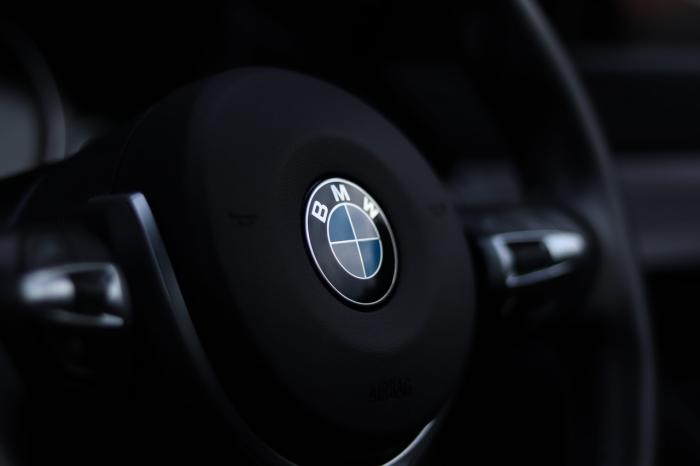The BMW iX3 electric SUV marked a change of direction for the German luxury car brand. Before the launch of the new iX3, BMW’s only previous electric vehicle was the much smaller i3 hatchback, which was built from the ground up to run on electricity. While the i3 still had classic BMW features, it certainly didn’t look like a “normal” BMW. The i3 had a lightweight carbon-fibre construction and fancy rear-hinged back doors which, at the time, seemed like the future had come early.
Until now, the BMW has used nasty, old petrol and diesel to generate their powerful motors, but now they’ve jumped on the EV train since electric actually works a whole lot better (for the driver and environment!). With the rise of interest and investments in electric vehicles and the pressure from governments to reduce carbon emissions, it’s looking pretty likely that electric motoring is likely to replace petrol and diesel motoring altogether at some point in the near future.
The BMW iX3 is the German company’s electric rival to competitors such as the Audi e-tron, Mercedes EQC and Skoda Enyaq and to keep up with the rising interest in the rivals, the i3 needed a serious facelift. The original car was revealed after it was already on sale in China so, when Europeans ordered the Premier Edition, the car had been facelifted by BMW to fit with the regular X3. Research by BMW found that drivers of EV’s did not necessarily want their cars to LOOK like EV’s. So the iX3 is new but just doesn’t look like it.
What does the iX3 look like?
Are we sure it’s an electric vehicle? You’re not wrong for double checking as it doesn’t have the normal characteristics of an EV.
BMW’s aim with the iX3 is to make it look exactly like any other X3. It has no complex carbon-fibre construction or unconventional styling like some alternative electric vehicles.
Upfront, there’s the usual BMW grille. This is what throws many off as an electric vehicle doesn’t NEED a grille but it’s all a clever ruse. Since it doesn’t have to cool anything, it has been sealed to help reduce drag and give the car’s range a small boost. There are also blue highlights around the ‘grille’, the badges and the sills. Similar, simple assorted blue highlights are dotted around the rest of the iX3, most obviously on the rear bumper where you’d normally spot some exhaust pipes.
A dimpled pattern breaks up what would otherwise be a big sheet of black plastic and the EV also benefits from some very cool, 20-inch bespoke alloy wheels. Although the wheels look exceptionally vulnerable to kerbing, their heavily sculpted design helps to smooth airflow along the side of the car.
While this facelift adds a luxurious, futuristic feel to the vehicle, the overall design hasn’t changed much at all. In fact, the main things that mark it out visually from petrol and diesel versions are the solid plastic grille, aerodynamic alloy wheels and a smattering of blue highlights.
“BMW’s second full-electric car is a little more ‘normal’, a pragmatic EV that can go a long way on a charge” Source: https://www.topgear.com/car-reviews/bmw/ix3
What’s the iX3 like inside?
The differences between the BMW iX3 and the X3 are even harder to spot inside than outside. If you’re after the wow factor of EV’s such as the Tesla’s cabin then you might find yourself disappointed.
While the facelift brings minimal changes, some of the newer features are still impressive. The iX3 has the brilliant BMW iDrive infotainment system with a 12.3in display in the middle of the dashboard. The display works as a touchscreen but you can also operate it using a secondary rotary controller between the front seats. As well as touch screen displays, the system also comes with the natural speech voice control function, which works surprisingly well.
Wireless phone charging (perfect for those long car journeys) is standard, and if you go for M Sport Pro trim you’ll get an upgraded Harman Kardon sound system.
Overall, the iX3 is very BMW-business-as-usual in the cabin. Complete with supportive leather seats, a fine driving position, a standard panoramic glass roof and strong material quality. The quality feel continues in the back. Space is really very good with enough room for taller adults to get comfortable. The 510-litre boot, while 40 litres down on the diesel X3, is still a handy shape. Folding the seats flat gives you 1,560 litres in total.
Conclusion
Even with those changes, the fundamentals pre- and post-facelift remain mostly the same, max power is an okay 282bhp and max torque is a feisty 295lb ft. At 2260kgs, this is the heaviest X3 by some margin, but it also boasts the most tenacious road-holding since the massive battery stack lowers the centre of gravity by a substantial 75mm.
This is still a BMW through and through, with the battery and electric powertrain underneath transforming the carbon-heavy X3 into a properly sweet-handling e-machine. It drives so well despite the additional weight we’re kind of baffled as to how BMW has pulled it off.
There is a range of personal leasing deals available on the cars2buy website, starting at £458.72 per month (inc. VAT). With our handy filter, you can pick from a range of trims, initial payments and lease terms to find the perfect deal for you. Contact our team today if you have any questions.
